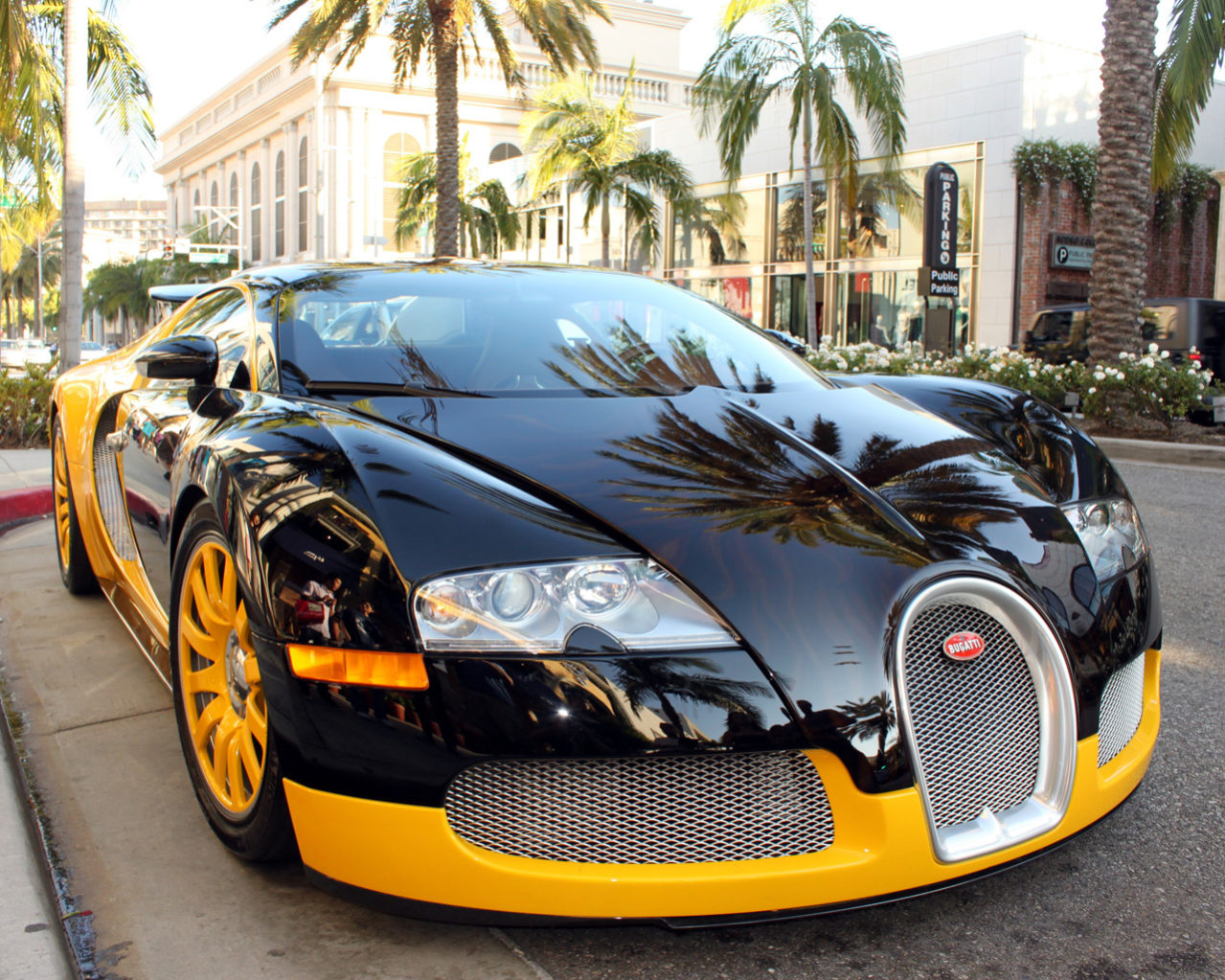Bugatti Veyron

Once again, an extraordinary automobile is manufactured in Molsheim, Alsace – an automobile that can only be described in superlative terms.
The development of the Veyron 16.4*) is one of the key milestones of 21st-century automotive engineering. Volkswagen CEO Ferdinand Piëch made high demands: the designers were to revive the heritage of Ettore Bugatti with this new super sports car. Equally challenging were the impressive technical requirements the exceptional serial production vehicle had to meet: a top speed above 400 km/h and 736 kW (1,000 HP). A truly formidable challenge. Yet the Veyron 16.4 unites the dichotomy of elegant form and high-tech function, of grace and power, aesthetics and safety in perfect harmony.
The Veyron’s exterior styling unobtrusively yet unmistakably quotes classic Bugatti design elements while defining its very own, modern style. Innovations for top performance, high acceleration capacity, and an extensive security system are signature elements of this super sports car. Ettore Bugatti occasionally made technical compromises for the sake of aesthetic integrity. This is the only tradition that was broken in the development of the Veyron 16.4.
*) Gearbox: 7 Gear DSG, fuel consumption combined: 24.9l/100km, fuel consumption in town: 41.9l/100km, fuel consumption out of town: 15.6l/100km, CO2 emission combined: 596g/km, Efficiency Class: G
Annual tax for this vehicle €1132
Energy costs at a mileage of 20,000 km:
Fuel costs (Super Plus) at a fuel price of 1.624 EUR/billing unit €8087.52
Created on: 11/30/2011
The values were calculated using the prescribed measurement method (§ 2, numbers 5, 6, 6 per car energy labeling ordinance in its current version).CO2 emissions, which result from the production and provision of fuel or other energy sources are not taken into account in the determination of CO2 emissions pursuant to Directive 1999/94/EC. The figures do not refer to a specific vehicle and are not part of the offer, but only serve the purpose of comparing different vehicle types. The fuel consumption and CO2 emissions of a vehicle not only depend on the efficient utilization of the fuel by the vehicle, but also on driving style and other non-technical factors. CO2 is the main greenhouse gas responsible for global warming. Notice pursuant to Directive 1999/94/EC of each current valid version: For more information on official fuel consumption and the specific official CO2 emissions of new passenger cars can be acquired from the “Guide for Fuel Economy, CO2 Emissions and Power Consumption of New Passenger Cars” available at all sales outlets and at DAT German Automobil Treuhand GmbH, Hellmuth-Hirth-Strasse 1, D-73760 Ostfildern – available free of charge or at www.dat.de. Efficiency classes of vehicles are evaluated in terms of CO2 emissions by means of the vehicle’s empty weight. Vehicles that correspond to the average are classified as D. Vehicles that are better are graded with A+, A, B or C. Vehicles that are worse than the average are given an E, F or G.
